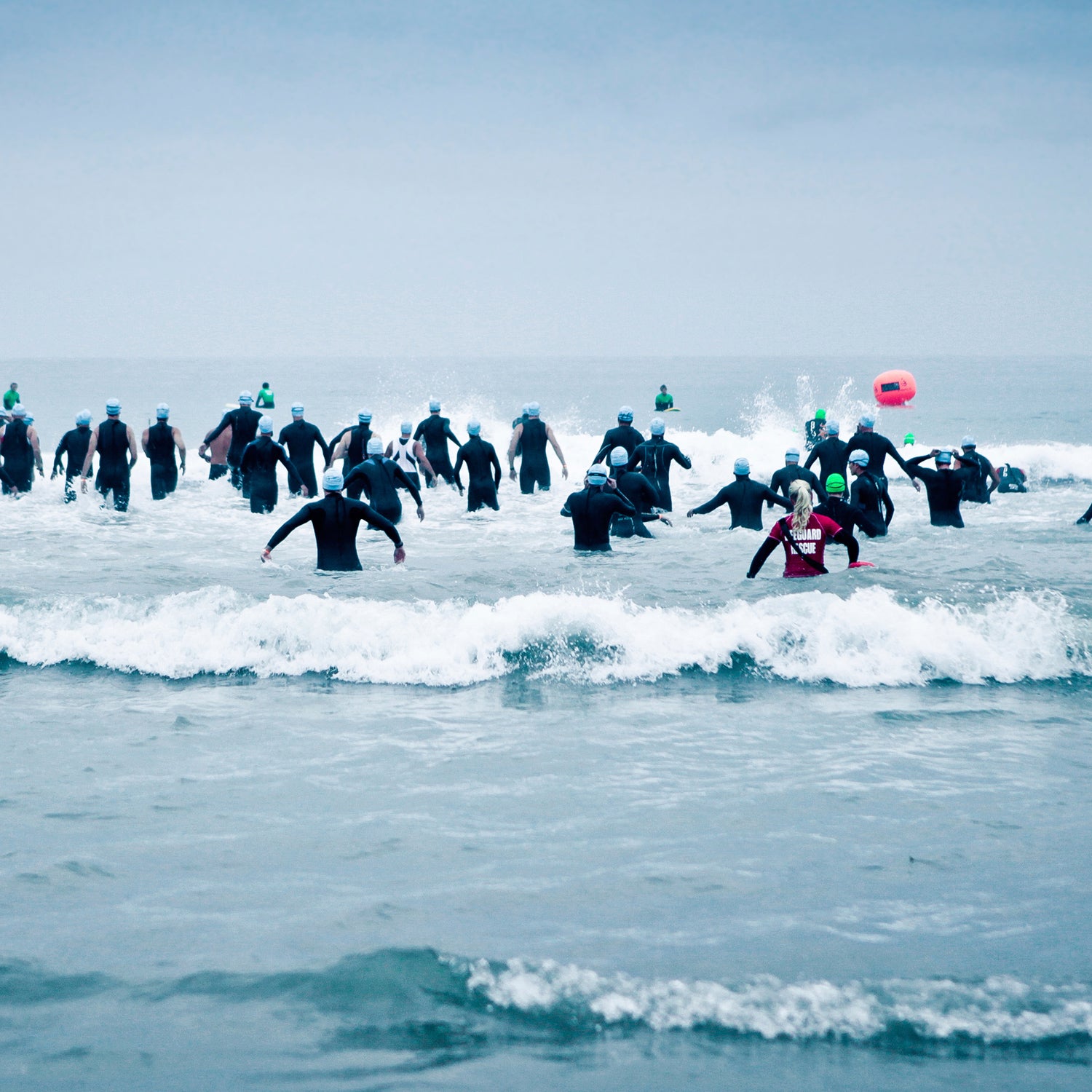A few days ago, Saturday, October 25, Roger Ackerman, a 68-year-old triathlete from Georgia, in Wilmington, North Carolina.
The cause of Ackerman’s death looked like a heart attack. Though he had been medically cleared to race, and was in good shape, he did have signs of past heart disease, including a stent. So, probably, it was indeed a heart attack.
But it’s also possible it just looked like a heart attack, but was actually rooted in pulmonary edema—fluid accumulation in the lungs that can prove lethal if unchecked, says . Edema can reduce the oxygen available to the body, which can lead to heart damage thus elevating markers used to diagnose a heart attack.
In recent years, triathlon race organizers have been worried that there’s something uniquely risky about the swim portion of races. From 2003 through 2011, 45 people died during races, 31 of them in the swim leg. Typically, the cause is linked to the heart, but David MacIver, a cardiologist at Musgrove Park Hospital in the United Kingdom, believes at least some of these cases are the result of what’s become known as swimming-induced pulmonary edema (SIPE) and that SIPE may be much more common than once thought. Endurance swimming, paradoxically by very fit people, appears to present a set of conditions ripe for just this series of events.
There have been a number of SIPE reports over the past decade that back up MacIver’s and Bates’ suggestion. For example, during a training exercise, young Israeli special forces soldiers swam 2.4 kilometers. , edema. Unfortunately, nobody is sure just why this happens.
Endurance swimming, paradoxically by very fit people, appears to present a set of conditions ripe for just this series of events.
But a proposes a mechanism.
MacIver and his team hypothesized that the pumping efficiencies of the left and right sides of the heart become unbalanced under the conditions of swimming in a triathlon. Both the left and right sides can be perfectly healthy, even highly efficient in a triathlete. The right side pump accepts blood from the body, then sends it to the lungs to be oxygenated. The left side pump accepts it back from the lungs and pumps it through the body.
Swimming in a triathlon can throw this balance out of whack. First, there’s extreme exertion, which raises blood pressure. That may not be a problem for most athletes, but in chilly water, blood and its fluid parts, like plasma, are drawn from the limbs and into the core, raising core blood pressure. MacIver also suggested that a tight wetsuit could further restrict blood vessels and raise pressure. Now the left side of the heart would have to pump even harder to keep up with the volume put out by the right.
“We then have a situation where the [right] pump is exceeding the [left] pump’s output and pulmonary edema develops” because the excess fluid leaks into the lungs.
Bates suggested that this may indeed occur in some cases but might not be necessary for pulmonary edema to develop in a swimming triathlete.
The blood vessels in our muscles can expand with exercise, but not break because the muscle tissue gives them structural support. But the lungs are on what Bates called “a low-pressure circuit.” Lung blood pressure has to be low because in the alveoli, where carbon dioxide and oxygen are exchanged, the interface between capillaries and alveoli cell membranes is only two membranes thick, less than 1 micron. (The width of a human hair is roughly 75 to 100 microns.) Too much pressure could burst the tiny vessels and leak blood and fluid into the lungs’ air spaces.
Since core blood pressure is already elevated by being in chilly water, piling on the hard work of swimming can be too much for that fragile system. Even under normal conditions a little fluid leaks into our lungs, Bates explained, but it’s cleared by the lymph system—which relies on ventilation—and we never notice it. Since swimmers are prone, with their faces in the water, and take longer intervals between breaths, they can’t ventilate like a runner. That makes the lymph system less efficient. Hence, edema.
“There are no good signs” somebody might be susceptible to SIPE, she said, “until it happens. It happens in people who are very fit, not just swimming in a pool, but high level athletes or scuba divers” who are exposed to far greater pressures even if they aren’t breathing as hard.
Existing heart and blood pressure problems might be risk factors. Some have suggested that if it happens once, an athlete is more likely to have it happen again, but that’s mostly a guess, too. MacIver listed warning signs of edema, like frothy or pink sputum and excessive breathlessness out of proportion with the normal heavy breathing of intense exercise.
If an athlete experiences any of those symptoms, of course, the thing to do is stop and ask for help. Both of the cases MacIver described in his study ended well because the swimmers received treatment and observation right away.
Because nobody knows exactly how often it happens, it makes studying and preventing SIPE difficult. But even if a small minority suffer it, the raw numbers can add up. As of 2013, USA Triathlon registered 174,787 members. If just one percent of them were to suffer swimming-induced pulmonary edema, that would be 1,747 people, though only a fraction of the cases may prove to be deadly.
While there’s not much anybody can do to prevent it, the phenomenon should be one more incentive for race organizers to beef up monitoring, safety protocols, and deploy rescue boats that can spot a swimmer in distress.
is a writer and author based in California. A frequent contributor to NBCNews and �����ԹϺ��� magazine, his work has appeared in The New York Times, The New York Times magazine, Wired, Esquire, The Los Angeles Times magazine, and many others. His most recent book is , written with neuroscientist Larry Young. Follow him on Twitter at


